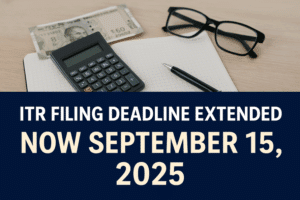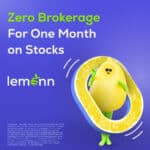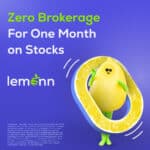
Introduction: A Bold Statement, A Bigger Question
On May 15, 2025, former US President Donald Trump stirred up global trade circles by claiming India had agreed to impose no tariffs on US goods. The comment, made during a business event in Doha, took many by surprise, especially since India has long been known for high tariff barriers—especially on imports like automobiles, electronics, and agricultural goods.
So, is this a true trade revolution or just political posturing? Let’s break it down for Indian retail investors looking to understand what this means for the market, the economy, and their portfolios.
The Trump Claim: What Exactly Did He Say?
Trump’s claim came during a conversation about global manufacturing strategies, where he urged Apple CEO Tim Cook not to invest in Indian production. His reasoning? High tariffs. But then he added a twist—India, according to him, had offered to drop tariffs to zero on all US imports.
He added confidently:
“They’ve already agreed. They wouldn’t have done this for anybody else but me.”
However, no official statement from the Indian government has backed this claim—yet.
The India-US Trade Relationship in Numbers
Let’s look at some key stats to understand the context:
| Metric | Value (2024) |
|---|---|
| Bilateral Trade | $129 billion |
| India’s Trade Surplus with US | $45.7 billion |
| Average Indian Tariff | 17% |
| Average US Tariff | 3.3% |
| Agricultural Tariff (India) | 39% |
| Agricultural Tariff (US) | 5% |
Clearly, India has much higher average tariffs, especially in agriculture—often to protect domestic farmers and industries.
What’s Actually on the Table: Zero-for-Zero Tariff Proposal
While Trump’s statement suggests an all-out tariff waiver, the reality is more nuanced.
India has proposed a “zero-for-zero” deal covering:
| Sector | Proposed Tariff | Conditions |
|---|---|---|
| Steel | 0% | Reciprocal & quantity-limited |
| Auto Components | 0% | Reciprocal & quantity-limited |
| Pharmaceuticals | 0% | Reciprocal & quantity-limited |
This is not a blanket offer for all goods but rather a targeted trade strategy meant to boost exports while safeguarding sensitive sectors.
Why This Matters for Indian Retail Investors
1. Boost to Key Sectors
If finalized, zero tariffs in steel, pharma, and auto components could mean higher exports, potentially benefiting Indian listed companies in these sectors.
2. Impact on Global Supply Chains
The US may prefer sourcing from India instead of China, boosting India’s ‘Make in India’ initiative. This could push up stock valuations in electronics and manufacturing.
3. Market Reactions
After Trump’s claim, the Sensex surged 1,330 points, reflecting positive investor sentiment around potential trade breakthroughs.
But Wait, What’s Holding It Back?
India’s Caution: Agriculture is Key
India’s high agricultural tariffs protect over 100 million farmers. Dropping these tariffs could trigger political and economic fallout, especially after the 2021 farmer protests.
US Concerns: Job Losses
American industry groups worry that zero tariffs could lead to job losses, especially in pharma and steel where Indian producers are cost-competitive.
Negotiation Status
A full bilateral trade agreement (BTA) is in the works, with a goal to conclude Phase 1 by Fall 2025. However, the talks span 19 chapters, including non-tariff issues like quality standards, which could take time.
What Are Experts Saying?
Experts believe a full “no-tariff” deal is unlikely. Instead, expect a hybrid agreement with:
- Partial tariff cuts
- Reciprocity-based access
- Specific volume limits
- Non-tariff reforms (like easing certification barriers)
This approach is more realistic given the structural and political differences between the two economies.
India’s Strategic Gameplan
India seems to be leveraging Trump’s tariff threats as a chance to:
- Negotiate exemptions from US tariff hikes (currently paused at 10% baseline, down from 26%)
- Push for $500 billion in bilateral trade by 2030
- Secure supply chain partnerships in tech, semiconductors, and electronics
This is not just about trade—it’s about geopolitical positioning in a multipolar world.
So, Did India Really Offer Zero Tariffs?
Short answer: No—at least not yet.
Trump’s claim may reflect an early or exaggerated interpretation of India’s proposal, which is sector-specific, conditional, and part of ongoing negotiations.
Still, the fact that such a proposal is even on the table marks a major shift in India’s trade posture.
FAQ
Did India officially confirm Trump’s “zero tariff” claim?
No. As of May 15, 2025, there is no formal confirmation from the Indian government.
What is a “zero-for-zero” deal?
It means both countries agree to drop tariffs on specific goods, but only if both sides reciprocate.
Will Indian farmers be affected?
Agriculture is not part of the current zero-tariff proposal, likely due to its sensitivity and political implications.
Which sectors could benefit in India?
Steel, pharma, and auto components stand to gain the most if the deal goes through.
How should investors react?
Stay tuned for announcements post the May 17–20 visit by Commerce Minister Piyush Goyal. Expect market reactions and sector-specific opportunities if a deal materializes.
Why does India impose high tariffs on imports?
To protect domestic industries, especially in agriculture and MSMEs, and support local employment.
What are US concerns in trade with India?
High Indian tariffs, non-tariff barriers like quality regulations, and unequal market access.
What happens after the 90-day tariff pause ends?
If no agreement is reached, the US may reimpose 26% tariffs on Indian goods, which could hurt exports.
Final Thoughts: Trade Talk or Trade Turning Point?
Trump’s claim might be more political than practical, but it signals a real shift in India-US trade dynamics. For Indian investors, this is a space worth watching. The potential upside in specific sectors could be significant—but so are the risks if talks collapse.
So, whether you’re a long-term investor or a short-term trader, keep an eye on policy signals, diplomatic moves, and sector-specific developments. Because when the world’s biggest democracies talk trade—markets listen.







